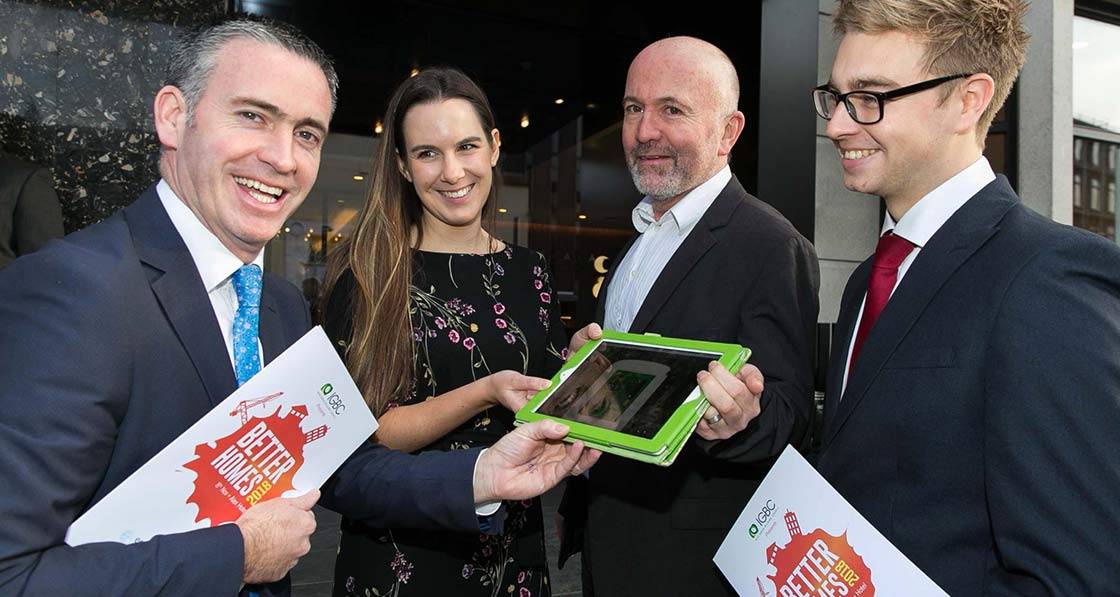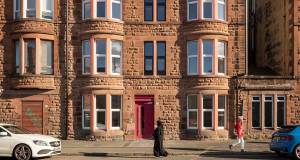
- Events
- Posted
Irish building industry foresees imminent green shift
Fifty-four percent of Irish organisations participating in the World Green Building Trends 2018 SmartMarket Report expect their projects to be green by 2021 — well above the global average of 47%. “The number of green buildings has increased significantly in Ireland over the last five years,” said Pat Barry, CEO of the Irish Green Building Council (IGBC).
This article was originally published in issue 28 of Passive House Plus magazine. Want immediate access to all back issues and exclusive extra content? Click here to subscribe for as little as €10, or click here to receive the next issue free of charge
“There are substantial social and economic impacts of going green. These buildings create a more productive workplace for occupants and can help with mitigation of climate change. Green buildings also see benefits for corporate reputation and the building itself has lower volatility in market value.”
Published by Dodge Data & Analytics, the new industry report shows that client demand is the most important trigger for new green building activity in Ireland, selected by 71% of respondents, more than double the global average. Environmental regulations are the other notable trigger in this country.
In spite of these encouraging results, the lack of educated green building professionals was identified as a key obstacle to more green building by nearly half of Irish participants. “Construction professionals have substantial responsibility in promoting a greener built environment. The sustainability skills of the Irish construction sector must be updated if Ireland is to achieve its climate targets,” said Pat Barry. “As part of its training programme, the IGBC recently launched a nearly zero energy building (nZEB) webinar. We also work in close cooperation with other construction institutes to better incentivise professionals to upskill in the area. Yet, we cannot achieve anything without strong governmental support and leadership.”
The World Green Building Trends 2018 SmartMarket Report indicates that the international market for green construction projects has grown significantly in the last 10 years and demand for green building activity is poised to grow globally. Healthier buildings also emerged as a top green priority in the study. For example, the top social drivers for green buildings included improved occupant health and well-being.
Participants in the survey included over 2,000 architects, engineers, contractors, owners, specialists/consultants and investors from 86 countries. The survey used a definition of green building that included, at a minimum: energy, water and general resource efficiency; waste reduction and recycling, and good indoor environmental and air quality. It also specified in its definition that many green buildings include: the use of renewable energy; materials that are non-toxic, ethical and sustainable; consideration of the quality of life of occupants, and a design that adapts to a changing environment.
For the full report visit www.igbc.ie.
Air quality & climate change big risks for housing, IGBC event hears
Meanwhile, indoor air pollution was extensively discussed at the IGBC’s ‘Better Homes’ conference in Dublin on 8 November, with attendees hearing that it represents a major health risk factor for Ireland’s new home building programme.
“Irish people spend 90% of their time indoors. Poor ventilation can have significant implications on health,” read a statement released by the IGBC in conjunction with the event. “As new homes become more insulated and airtight, greater focus is needed on the management of ventilation.”
One of the speakers at the conference, Dr Gráinne McGill of the Glasgow-based MEARU research unit, said: “Poor indoor air quality in housing can be increasingly traced to poor ventilation. As our homes become more airtight, less dependence can be placed on natural infiltration. Adequate ventilation systems are now critical.”
IGBC CEO Pat Barry emphasised the need to give consumers more information on the quality of housing they are buying.
"We are committed to enabling home buyers to make more informed choices,” he said. “Our Home Performance Index certification scheme provides a single label for quality and sustainability. It indicates to home buyers that a house has been built to consider impacts on health and is climate change resilient.” The conference also heard about key risks for Irish homes brought by climate change, including flooding and overheating.
“To minimise the health impacts of climate change, every home must be planned, designed and built to be sustainable,” said Dr Ina Kelly, a public health consultant with the HSE. “The particular vulnerability of the very young, the sick and the very old must be fully taken into account.”
Another speaker at the event, Matthew Barker, resilience and risk expert with building science centre BRE, added: “The construction industry needs to be pro-active in its response to climate change. Simple design changes can reduce climate related risks such as flooding. Resilience must be considered before an event not as a response to it.







